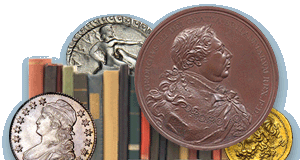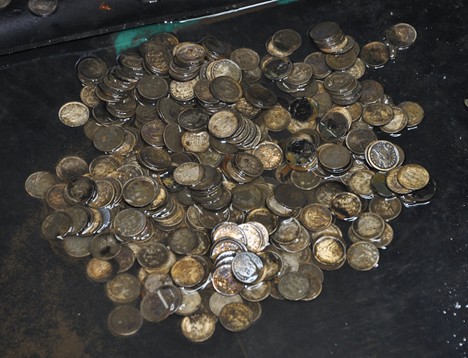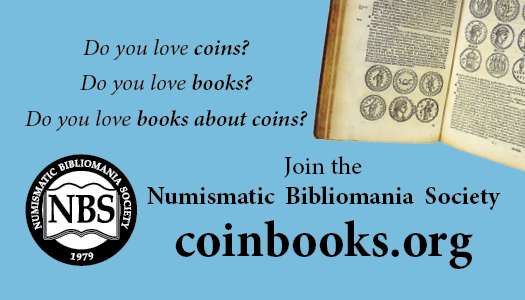
PREV ARTICLE
NEXT ARTICLE
FULL ISSUE
PREV FULL ISSUE
TREASURE TALK WITH BOB EVANS, EPISODE 6.2In January, our good friend Bob Evans began publishing a series of blog articles on the Finest Known website detailing his experience as co-discoverer and curator of the treasures recovered from the wreck of the S.S. Central America. Subject of the book "Ship of Gold", many exhibits, countless interviews and articles, books and auction catalogs feature the legendary haul of gold coins, bars, nuggets, gold dust and more from the 1857 shipwreck. Here's another excerpt - see the complete article online. -Editor The next April found me back at sea working on the shipwreck I last saw 23 years previously. The crew of the Odyssey Explorer treated me, at first an outsider, with real respect, which I truly appreciated. I will admit that a whole mental circus unfolded in my mind as I felt like a native guide ushering a team of world class explorers into a place that only I knew well. Or I thought I knew it well. The technology in 2014 was worlds removed from the tech of 1991. During the receivership hearing in 2012, I was asked about any plans I had for future expeditions, and I testified that the first step should be a thorough survey of the entire shipwreck site. And that is what happened, a full photo-mosaic and multi-beam sonar survey, mapping the whole main shipwreck and surrounding debris field. I remember team members enjoying the sport of browsing through the images of the photo-mosaic, looking for piles of coins in the debris field, and recording each such location. Each image, slightly overlapping the previous one, represented a straight-down photo from 2 or 3 meters above the seabed. I recall hearing some delighted remarks as piles of gold coins marched into view, "Whee!" "Bingo!" "Yahtzee!" "Jackpot!" There was so much variety in the coin piles representing passenger money, more than we had ever seen from the commercial shipment, which was dominated by gold bars and boxes of double eagles. Now we had the whole coin shop. Gold coins ranged from tiny 25¢ California Fractional Gold to $20 double eagles, found sometimes in close juxtaposition. They arranged a screen for me and started scrolling through the dive's frame grabs. The coffee was kicking in, so I began yakking, sharing my experience and commenting skeptically, "Oh yeah. We saw all kinds of iron boxes, giant and small. Those water tanks are big iron boxes, you know? Back in ‘91, we landed next to a smaller box once and cut into it. Nothing. Maybe a box of tools or nails or…"
My jaw dropped as I slowly intoned, "That… could be… a safe." The others laughed at my reaction, and then we discussed this new discovery. We puzzled over the box for some time, but the general consensus was that it was, in fact, a safe. Its location 28 meters from the port side of the shipwreck was a mystery, but it honestly looked like a cast iron box with legs, lying on its side, and covered with both rust and biology. Could we recover it? Intact? Or was that too risky? It must be heavy – it's a safe. It was better to open it in place than to risk a disaster by moving it. We pushed on the second hinge, and the heavy door crumbled onto the sediment clouding our view. Once it cleared, we could see different chambers inside. There appeared to be unknown contents sitting there, having waited 157 years to be seen again.
That might be important! When we finished the dive and Zeus was on deck, we opened the drawer and carried the bags to the secure "Coin Room" to be examined. We opened the small bag and found it contained US half dollars and quarters. Standard protocol needed to be followed, so we fully examined and identified each coin, photographing the "new" ones (coin denomination-year-mint combinations that had not yet been seen during the season.) Since this was the year's first encounter with a hoard of US silver, there were a lot of "new" coin photographs and entries into the spreadsheet. It took a couple hours. The Odyssey guys were professionals, but they weren't too thrilled with silver, since they had seen huge numbers of silver coins on the S.S. Republic and the Mercedes. While we were trudging through the quarters and halves, conversation ran to the other, larger bag. Since this bag held silver, was the big bag full of gold? The bag sat on the exam table awaiting opening. Coins inside pressed against the wet canvas, blackened by the 157 years in a deep-sea swamp. The bulging impressions looked like small coins. Could this really be a bag of small gold? That would be fantastic! Fred van der Walle, the conservator, stood over the bag sitting on the wet examine table. The tabletop consisted of a large, inverted, plastic bin cover, with a black rubber mat covering the inside surface. This gave us a shallow tub that contained any spills, or at least most of them. It got pretty wet in there at times. Fred opened the bag as anticipation mounted. He announced, somewhat dejectedly, "It looks pretty black." Then he reached in with his exam-gloved-hand and pulled out a handful of coins, plopping them onto the black rubber. Then he poured out some of the contents.
Dimes!
I figured it was the purser's safe.
To read the complete article, see:
For the complete series, see:
To read the earlier E-Sylum article, see:
Wayne Homren, Editor The Numismatic Bibliomania Society is a non-profit organization promoting numismatic literature. See our web site at coinbooks.org. To submit items for publication in The E-Sylum, write to the Editor at this address: whomren@gmail.com To subscribe go to: Subscribe All Rights Reserved. NBS Home Page Contact the NBS webmaster 
|






